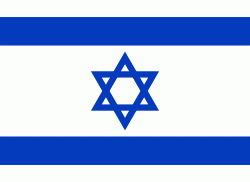Rahat
Rahat (رهط, רַהַט) is a predominantly Bedouin city in the Southern District of Israel. In it had a population of. As such, it is the largest Bedouin city in the world, and the only one in Israel to have city status.
Rahat is one of seven Bedouin townships in the Negev desert with approved plans and developed infrastructure. The other six are Hura, Tel as-Sabi (Tel Sheva), Ar'arat an-Naqab (Ar'ara BaNegev), Lakiya, Kuseife (Kseife) and Shaqib al-Salam (Segev Shalom).
The region of the city was formerly owned by Al-Tayaha tribe (Al-Hezeel clan). Until the year 1972 the town was called "El Huzaiyil" (الهزيل) before changing its name. In 1972 Rahat was considered by the government of Israel as a new settlement for Bedouin who lived in the surrounding area without permanent domicile. Until 1980, Rahat was part of the Bnei Shimon Regional Council and from then on (until 1994) it was a local council (administered by a private board until 1989). In 1994 it was recognized as a city – the first Bedouin city in Israel.
Rahat is one of seven Bedouin townships in the Negev desert with approved plans and developed infrastructure. The other six are Hura, Tel as-Sabi (Tel Sheva), Ar'arat an-Naqab (Ar'ara BaNegev), Lakiya, Kuseife (Kseife) and Shaqib al-Salam (Segev Shalom).
The region of the city was formerly owned by Al-Tayaha tribe (Al-Hezeel clan). Until the year 1972 the town was called "El Huzaiyil" (الهزيل) before changing its name. In 1972 Rahat was considered by the government of Israel as a new settlement for Bedouin who lived in the surrounding area without permanent domicile. Until 1980, Rahat was part of the Bnei Shimon Regional Council and from then on (until 1994) it was a local council (administered by a private board until 1989). In 1994 it was recognized as a city – the first Bedouin city in Israel.
Map - Rahat
Map
Country - Israel
 |
 |
| Flag of Israel | |
The Southern Levant, of which modern Israel forms a part, is on the land corridor used by hominins to emerge from Africa and has some of the first signs of human habitation. In ancient history, it was where Canaanite and later Israelite civilizations developed, and where the kingdoms of Israel and Judah emerged, before falling, respectively, to the Neo-Assyrian Empire and Neo-Babylonian Empire. During the classical era, the region was ruled by the Achaemenid, Macedonian, Ptolemaic and Seleucid empires. The Maccabean Revolt gave rise to the Hasmonean kingdom, before the Roman Republic took control a century later. The subsequent Jewish–Roman wars resulted in widespread destruction and displacement across Judea. Under Byzantine rule, Christians replaced Jews as the majority. From the 7th century, Muslim rule was established under the Rashidun, Umayyad, Abbasid and Fatimid caliphates. In the 11th century, the First Crusade asserted European Christian rule under the Crusader states. For the next two centuries, the region saw continuous wars between the Crusaders and the Ayyubids, ending when the Crusaders lost their last territorial possessions to the Mamluk Sultanate, which ceded the territory to the Ottoman Empire at the onset of the 16th century.
Currency / Language
| ISO | Currency | Symbol | Significant figures |
|---|---|---|---|
| ILS | Israeli new shekel | ₪ | 2 |
| ISO | Language |
|---|---|
| AR | Arabic language |
| EN | English language |
| HE | Hebrew language |















